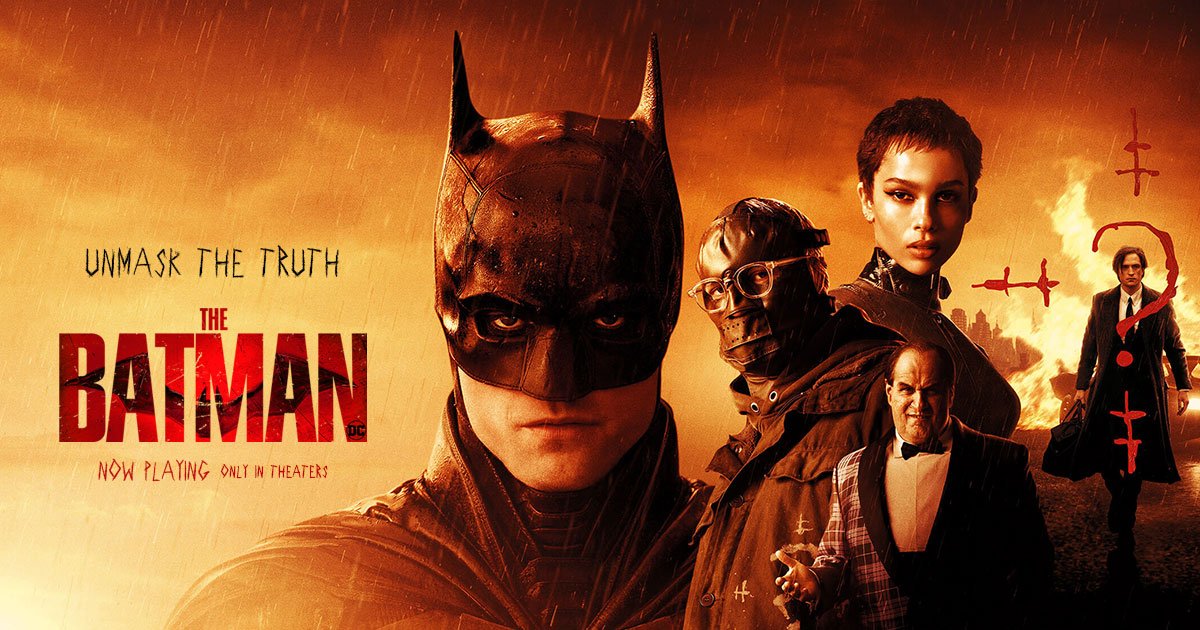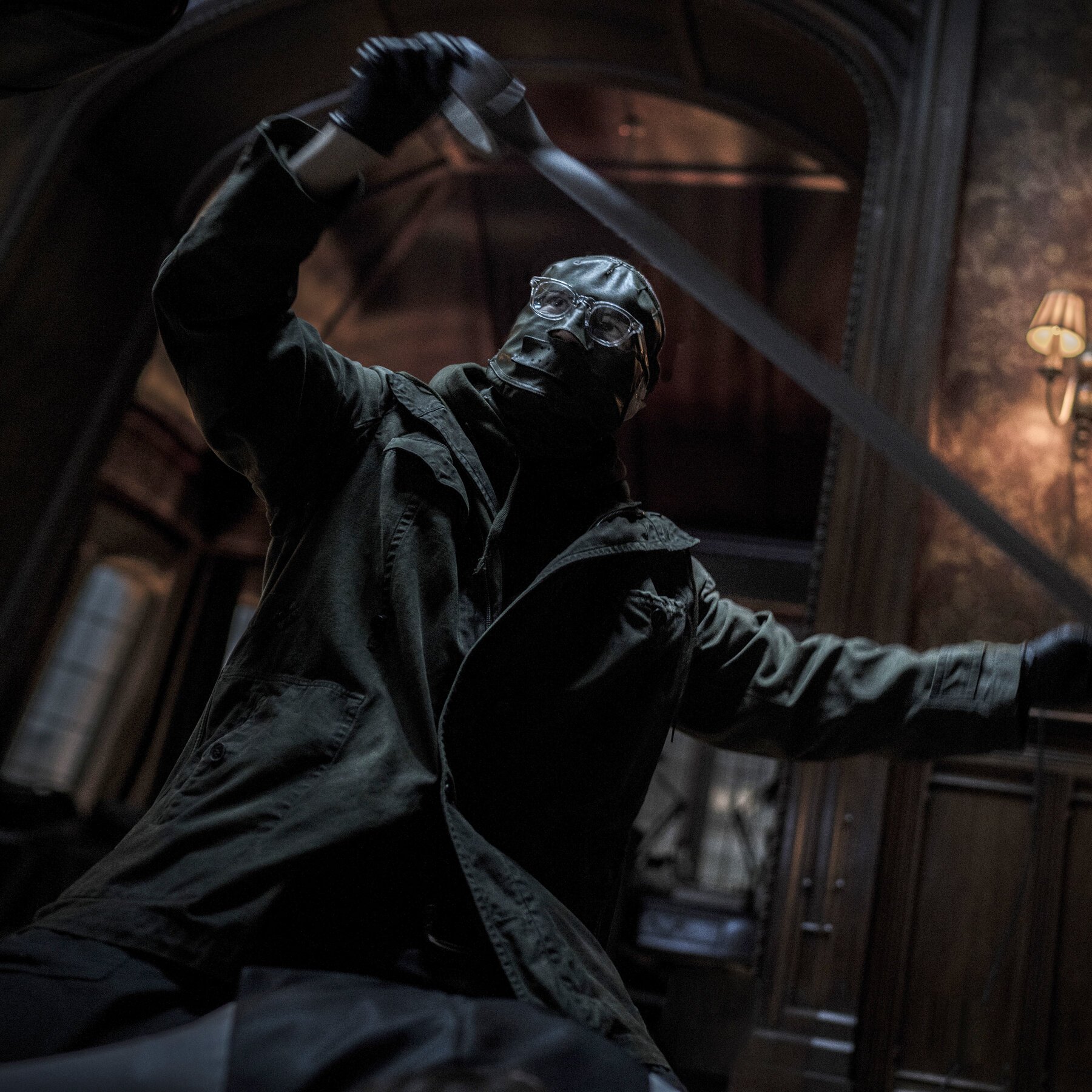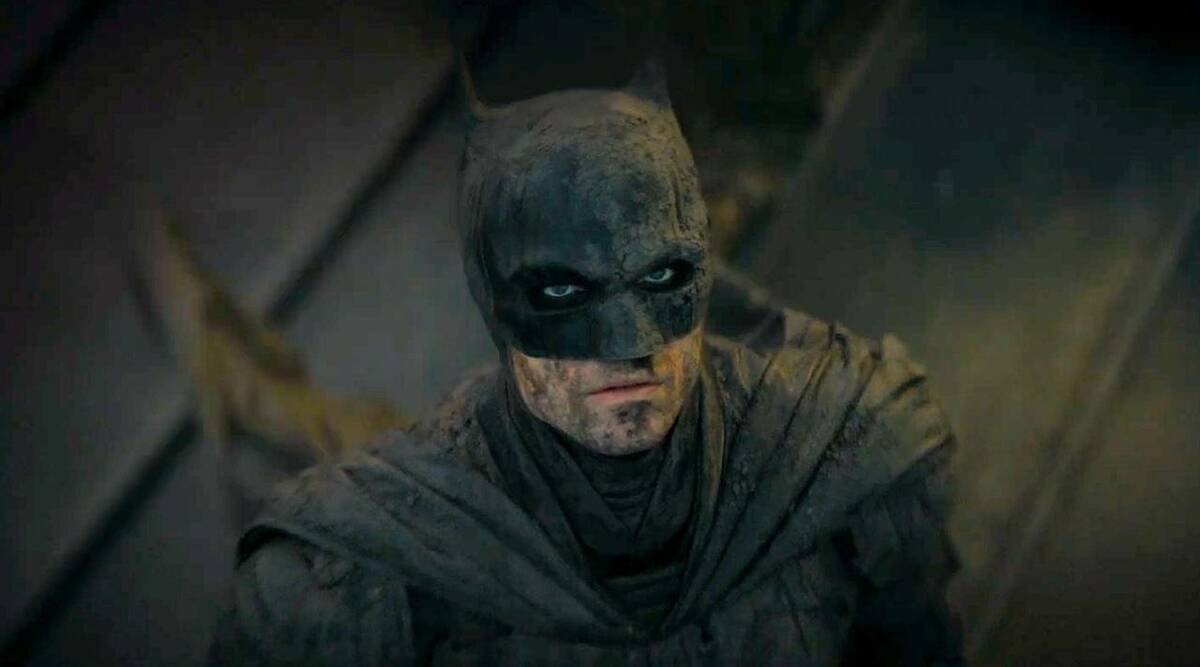As a longtime comic book fan, I’ve been conditioned to easily accept new interpretations of established characters. New creative teams often attempt to place their own stamps on the mythoi of beloved superheroes. In some cases, they are given free range to completely reinvent a character’s entire universe. I’m particularly thinking of DC’s fan-favorite Elseworlds line that featured books like Gotham by Gaslight, which relocated Batman to the 1890s and had him face off against Jack the Ripper, and Superman: Red Son, which illustrates how Kal El’s story would be altered had his spacecraft landed in the USSR instead of in the USA. All of this is to say that I’m perfectly fine with another new take on Batman and why I’ve been eager to check out his latest cinematic outing, Matt Reeves’ The Batman.
This time out, we have Robert Pattinson in the lead as our Dark Knight. His Bruce Wayne is a more psychologically damaged variation than what we’ve seen onscreen before. He’s only been in his nocturnal role for two years and he’s not yet an invincible instrument of dark justice. With the notable exception of Lt James Gordon (the always welcome Jeffrey Wright), the police don’t trust him. His relationship with ever-loyal butler Alfred Pennyworth (Andy Serkis, giving the character a different spin) is strained. We can feel his reclusive isolation in his grimly narrated journal entries.
The Riddler (creepy Paul Dano) seeks to expose the corruption that’s rampant amongst Gotham City’s governmental and socioeconomic elite. He’s making legitimate points, which endears him to the city’s downtrodden and politically aggrieved, but his methods and demeanor reveal him as a mentally unbalanced serial killer and terrorist. Selina Kyle (Zoe Kravitz, taking no shit) is starting down her own nocturnal avenger path, although her focus is maybe narrower and less grand than Wayne’s. Though it’s not explicit, we are expected to draw comparisons between these seemingly disparate people.
Other notable roles belong to an unrecognizable Colin Farrell as the rising in the ranks gangster Oz Cobblepot aka the Penguin, John Turturro as the quietly menacing crime boss Carmine Falcone, and Peter Sarsgaard as Gotham’s drug-addicted DA. Performances are excellent, for the most part. I think Turturro is maybe too understated and Serkis doesn’t get enough to do, however. These are minor nitpicks, though. Pattinson is fascinating as a more obviously troubled and inexperienced vigilante. He’s not as sure of himself and projects a certain vulnerability that perhaps makes the character less godlike and more relatable. I particularly liked the choice to make Bats quieter and soft-spoken. It lends his violence more impact. Farrell earns my favorite turn, though. It’s true that his extensive makeup does some heavy lifting, but he disappears into the role. It’s remarkable work and I’m looking forward to the Penguin getting fleshed out more in the rumored HBO Max miniseries where he will be the lead.
The script, written by Reeves and Peter Craig, is tight and propulsive. With so many characters and a runtime of almost three hours, you might think it would be overstuffed or push Batman to the background. Neither is true. Reeves and Craig opt for a precise noir/crime/thriller aesthetic that finally gives us the Dark Knight Detective many of us have been clamoring for. You’d never know it based on his films thus far, but “world’s greatest detective” is amongst Bats’ many monikers. Additionally, he first appeared in an issue of Detective Comics, a title that he headlines to this day. In any case, the mystery narrative plays out like clockwork while still giving room for character beats and world-building. The way Batman is handled is reminiscent of a character piece more than a traditional superhero film and that aspect combined with the crime genre elements makes for a genuinely fresh approach. What I mean is The Batman looks more to films like Se7en and Zodiac than Zack Snyder’s Justice League for its inspirations.
Greig Fraser’s cinematography also ensures a distinctive experience. The film is peppered with first-person POV shots that create a theme about watching and being watched. There are also a handful of interesting scenes where the camera is fixed to a moving object like the side of a car that assists in the manufacturing of breathtaking action sequences. Said action is also not edited into chaotic oblivion, either. For instance, fight scenes are shot from visually appealing distances and the camera is allowed to linger, which has the effect of making the fights look more raw and realistic. Though the film oozes style with its lighting techniques, costumes, and shot selection, there’s still a certain gritty realism to the film. It’s a flavorful mix that both embraces and separates the look of the film from previous Batman flicks.
Action set pieces are dynamic and engaging, although they’re maybe not as bombastic as most superhero flicks. Remember, this movie is focused more on character and mystery than dazzling eye candy. Still, there’s plenty of exciting mayhem. The new Batmobile is super cool and looks great tear-assing around Gotham’s mean streets. The final action sequence is huge and expertly staged. It’s smart, too, in that it’s meant to recall the inner journeys of both Batman and the Riddler. Coincidentally, it also calls to mind some of our recent, tragic history.
Music plays a huge part in the film’s success. Nirvana’s “Something in the Way” is masterfully utilized to set the tone. The classic depressing grunge track poetically gives us insight into Bruce Wayne’s mindset while communicating that Reeves and company want to try something slightly askew here. Michael Giacchino’s score picks up this baton and runs with it, creating a moody and melancholy backdrop that saturates our experience. I’m a sucker for atmospheric cinema, and this film has it in spades, thanks in so small part to its aural agenda.
Matt Reeves successfully made his own mark on the Dark Knight with The Batman. Robert Pattinson is outstanding and gives us a wholly new variation of a character that we’ve seen a lot of over the last couple of decades. I loved the mood that occasionally tiptoes into horror territory (our introduction to the Riddler is pretty damn frightening). Of course, seeds are planted for sequels, and I am definitely looking forward to further exploring this dark, dank world. Highly recommended for fans of serial killer narratives, villains with a point, and the effects of class on childhood trauma.
Michael Cavender







